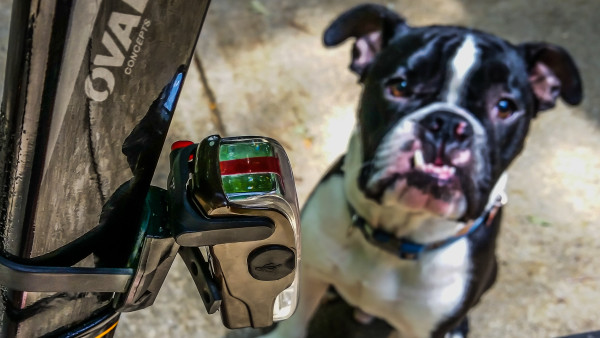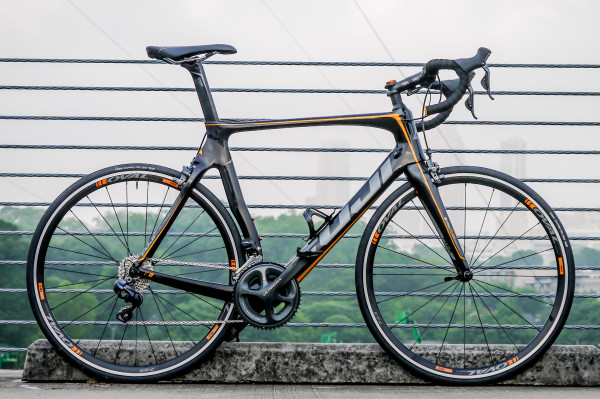
Fuji has a long and well established history, having been around since 1899, and is now run from their U.S. offices in Philadelphia. Fuji had huge success in the 1970’s competing with the costly European brands by offering a better value for a comparable bike. They exploded back on the scene in the last decade or so with some impressive appearances in the pro tours and continue to grow their presence and innovation here in the U.S.
Fuji sent us their newly designed Transonic 2.1 aero road bike to beat on and while some of the unsuspecting hidden gems of the Transonic were well thought out, it might be the price that’s most attractive…
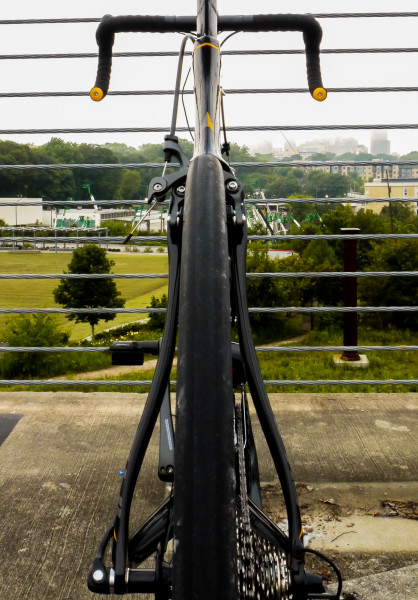

Up until recently, road bikes were, well, road bikes. Now a days, mountain bikes are divided into almost too many categories to count and depending on where you live and ride, you buy a bike that best fits that environment or live by the X = N + 1 theory. Though not near as varying as a mountain bikes, road bikes now have various categories of their own in regards to competitive and enthusiast level road bikes, (eliminating commuter, touring, and tri bikes since they’ve become a category all their own). You initially had what is considered a “standard” road bike, then in the early 2000’s, “comfort/more forgiving” road bikes (that have also seen an innovative push in the last few years) hit the mass market and most recently, “aero” road bikes have become the latest craze for riders to throw on their list of possibilities of road bikes to consider.
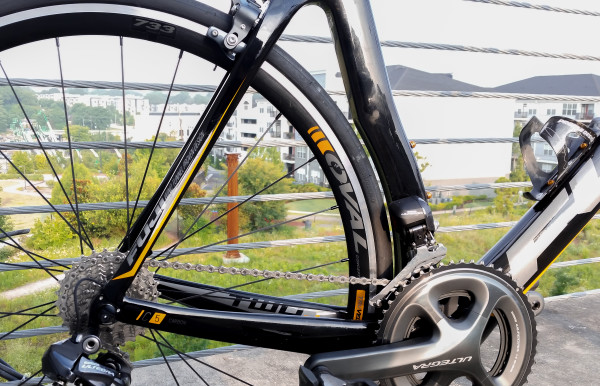
The heart of the Transonic 2.1 is its “C5” high modulus carbon frame that has the same features as its more expensive C10 higher modulus siblings. One of the pleasant features is that Fuji designed the Transonic’s frame to be as aero as it is mechanically functional. Sure the internal cable routing, aero seat post with an internal battery, and a knife like fork legs and rear stays are nice, instead of trying to “hide” Shimano’s fantastic direct mount brakes in or under the frame and fork with cable drag at a high risk, Fuji sculpted the frame and fork’s shape to incorporate the traditionally mounted brakes within its aeroness, (if it’s on Bikerumor, it’s a real word) making mechanics’ lives and us making adjustments two minutes before an event, more pleasurable.
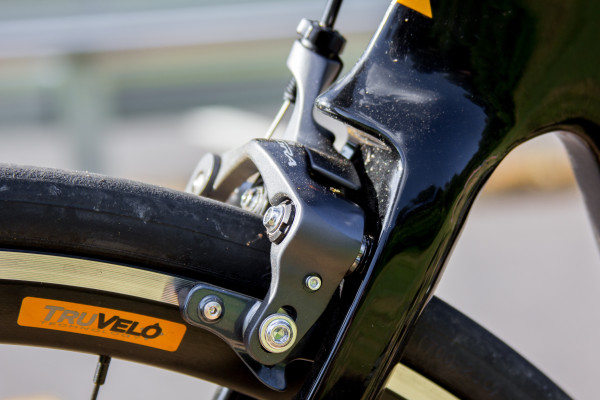
Before going into the rest of the details, one of the greatest features of this bike is where they skimped. That’s right. It’s common knowledge that manufactures will downgrade various “less noticeable” parts on a bike to reduce its cost to remain competitive and profitable. The items Fuji chose to skimp on are items that I would have likely had a personal preference on. The biggest being the TUBELESS READY wheels, (a benefit I’ll expand on further down). When buying a higher end road bike, many people either have some nicer wheels lying around, or may prefer to buy some aero wheels that best fit their needs. I cringe when I see a $5,000 bike with a $1,000 set of wheels I don’t want, and the Oval 733 wheels make for some great training wheels. In addition, the seat, *too long for me* stem and bars are almost always swapped out on every road bike I’ve ever had so it would make me feel good to not feel like I’m paying for too much of what I don’t want on this bike. The things they did NOT skimp on was pretty much everything else, and buying an Aero road bike with 11 speed mechanical Shimano Ultegra for $3,549 isn’t a bad deal at all. Buying an aero road bike with 11 speed Ultegra Di2 for $3,549 is almost unheard of leading me to triple check that the price was not a misprint.
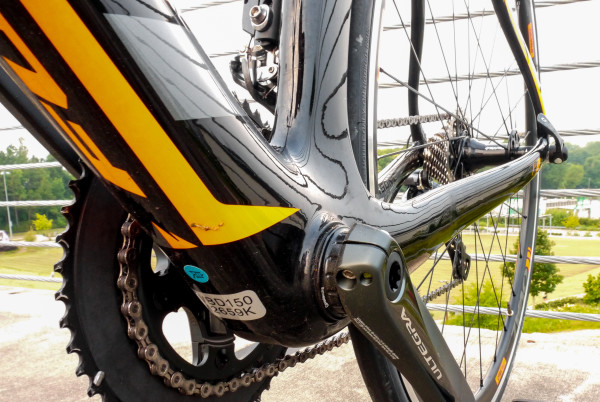
Riding impressions were as I had imagined. A fast stiff bike that delivered as much performance as it did Every. Single. Little. Bump. I am a rider that prefers a pretty solid and stiff frame, but like many other aero bikes on the market, you sacrifice some of the ride quality for the aeroness, (see, its growing on you). However, being a longtime fan of road-tubeless, I was happy to see that the bike was equipped with wheels that are compatible with road-tubeless tires giving the customer the option. I swapped out the wheels for some that I already had set up tubeless (90 psi), and I suddenly had a bike I could enjoy as a daily driver. Since there was plenty of tire clearance, a heartier 25c tire would help as well.
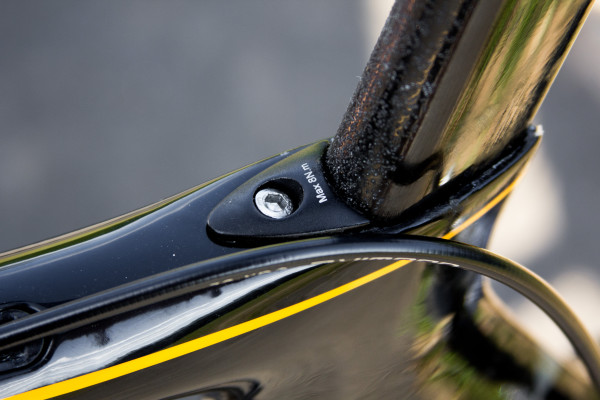
Performance being one of the biggest factors when considering an aero road bike over a more conventional road bike, I decided to put this bike to the test against 2 similar non-aero bikes by repetitively ghost riding the bikes down a long descent and measuring their top speeds. I got on the bikes and coasted from a dead stop from the top of a hill numerous times on all bikes, (I used the same wheels and adjusted the stem height on all bikes to make it as fair as possible), and measured the top speed. I then measured the speed after coasting on a section of flat road from 25 mph from one fixed point to another. To my surprise, the Transonic’s consistent championships were won with a wider spread than I had expected.
Aeroness Factor

A pretty solid 5+ percent improvement is nothing to gawk at when you consider how close even a 2% difference can be between two similar riders.

Another surprise was that, by the seat of my pants, I couldn’t say I noticed any out of the ordinary effects of cross winds one might expect to experience on a bike in this category. In the video below, they go into the design of the frame and how teaming with pro team NetApp-Endura last year on the design brought this model to fruition. Though aerodynamics was a key feature, the team needed the bike to be laterally stiff and responsive as well as have a stable steering geometry. The Transonic delivered and despite a little extra chatter on cobbled asphalt going into a turn, so as long as you pushed it with confidence, the bike obeyed.
In conclusion, I came away impressed. The performance was there, the ride became tolerable with the more supple tubeless tires, and the component selection was excellent considering the price. The very nit-pick items I found with the Transonic 2.1 were that the 120mm stem that comes with the 58cm frame is a bit on the long side for my proportionate 6’1” frame and the compact cranks. Though it’s what the masses prefer, the wide spread epidemic of compact cranks coming on practically everything now a days including on what I consider a bike for a more serious enthusiast felt out of place. I may not fall into the majority here, but it was something that kept crossing my mind as I kept assuming I was in the small chainring when I wasn’t. However, the most frustrating part of my experience with Fuji’s Transonic 2.1 had nothing to do with the bike but more to do with finding a damn blinky light in my massive collection of blinky lights that would stay in place on the super pointy aero seat post and frame. Eventually I would hit a bump, or with time, the light would slide over and my leg would start brushing it causing me to make old man grumbling sounds…. more than usual. Still though, Fuji has done an excellent job with the Transonic’s design and putting such a capable bike with an astounding build kit within a customer’s reach for well under the $4,000 mark was a job well done.
